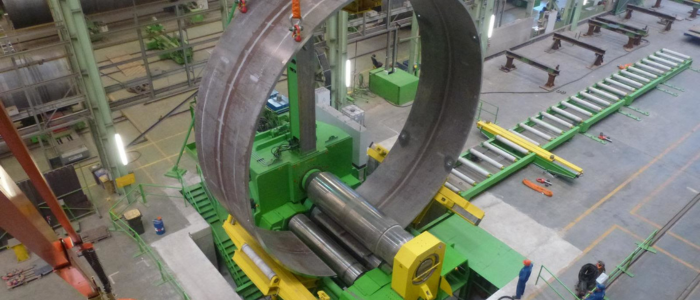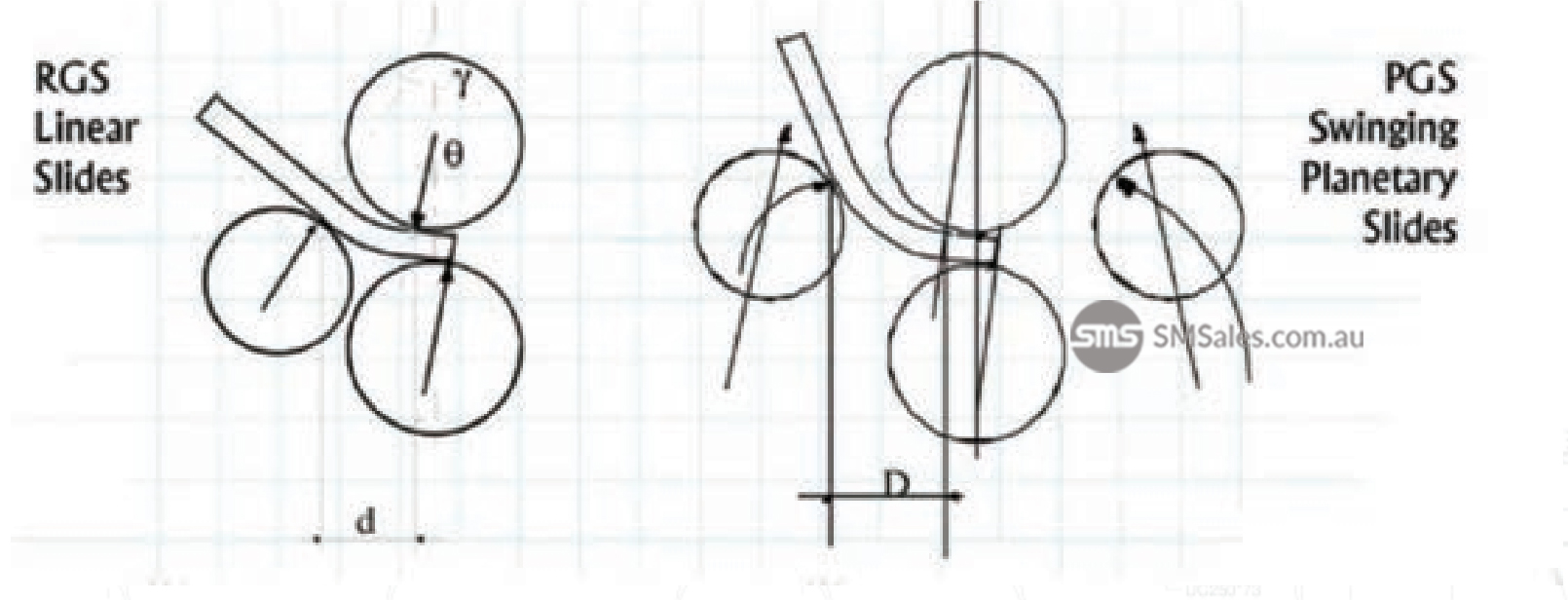White Paper – Clear & Unbiased Facts About Plate Roll Machines

LINEAR SLIDE V SWING SLIDE PLATE ROLL DESIGN
Plate rolling customers encounter significant specification and design differences in plate rolling machines which affect the length of green left behind on the plate after pre-bending & rolling. Most of your peers investing in a set of plate rolls have noticed this as well. It is accepted that there are differences in the geometry and distances between the rolls and many clients have made this observation after they had made the investment. What is discovered is that the swing slide design produces a longer flat end and a teardrop profile when rolling tight diameters. When comparisons are made to the linear slide plate roll designed machine, the linear slide design plate roll is the productive choice!
Clients require evidence of the implications to their business in judging their choice of what plate roll design is correct. When performance outcomes are discussed, with the relevant expert, an appropriate engineered plate roll is specified to meet supply gaps in current and future projects not served from the fabricator's product offering.
Owners of swing slide machines will notice that they are not competing against owners of linear guide machines. Most fabricators know that they will win work based on price per rolled part. Because of this, they do not bid on a particular job as the long flat end is accentuated when rolling tight diameters from swing slide machines. The teardrop profile, generated from swing slide machines, requires significant time and effort to cut and roll out. Competitive pressures make this task difficult even on new machines with experienced operators. We suggest your business speak to fabricators who own both styles of machines to ascertain what plate roll design is the most productive.
Plate roll operators will tell you that the swing slide design utilises the leverage effect from the greater distance between the side and top roll spacing. Many consider that the long distance between the swing slide rolls produces the long flat end of rolled parts. What is also found is that swing slide machines require less power and are lighter machines in comparison to equivalent capacity linear slide machines. Similar examples can be found when a larger ‘V die’ opening on a press brake requires less tonnage and a longer return leg is produced. For example, fabricators can settle for a swing slide design when rolling 30m diameter storage tanks for the mining industry where the flat end relationship to the radius does not matter.

When plate roll users believe both designs are similar they perceive the cheaper swing slide machine to produce a faster ROI. What they found was that undercutting a plate roll specification to buy on price introduces long term performance challenges that did not address gaps in the market the machine was purchased for. Buying the cheaper alternative limited long-term performance with the net effect being delayed in production and revenue loss.
Plate rolling clients can encounter many different opinions when considering a new or used plate-rolling machine. Your peers have experienced bias views from plate rolling machine tool builders that only produce swing slide design machines.
Specialist Machinery has both the linear and swing slide design plate-rolling machines in our portfolio of solutions. An appropriate machine specification should match the fabricator's performance expectations, for short and long term rolling projects. It is often discovered that the linear slide design offers superior quality of the rolled product that is easier and more profitable to fabricate. Ask your plate roll manufacturer these questions:
- What is the tightest diameter the machine can roll for the largest thickness of material over the full length of the machine?
- What is the pre-bending for question 1?
- What would be the at the end when rolling question 1?
- Will the plate roll manufacture demonstrate the machine, rolling question 1 and 3?
- Will the machine need to be bolted down for question 4?
- What is the yield strength specified on question 1?
How can we improve your process?
Learn More
Contact Specialist Machinery Sales today to discuss a superior machinery strategy for your business.
